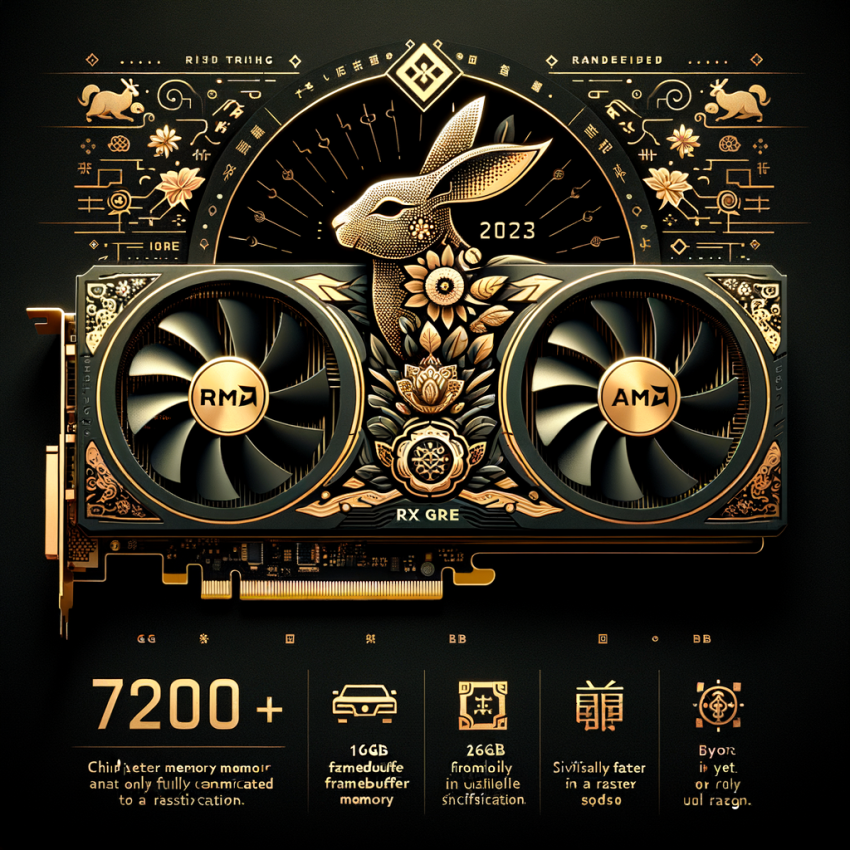AMD launches RX 7900 GRE as full retail product to challenge Nvidia’s RTX 4070 Super
RX 7900 GRE offers more memory and faster performance than Nvidia’s 4070 Super
In a bold move to challenge Nvidia’s dominance in the high-end graphics card market, AMD has unveiled the RX 7900 GRE, a fully functional retail product designed to compete directly with the RTX 4070 Super. Boasting an impressive 20GB of GDDR6 memory, the RX 7900 GRE outmuscles Nvidia’s offering, which is limited to 12GB of memory. This advantage provides a significant boost in performance, particularly for resource-intensive tasks like 4K gaming, video editing, and 3D rendering. The RX 7900 GRE also features AMD’s latest RDNA 3 architecture, promising even greater performance gains over its predecessor, the RX 6900 XT.
AMD delivers value for users not prioritizing ray tracing with RX 7900 GRE
AMD’s strategic pricing of the RX 7900 GRE positions it as an attractive option for users who prioritize raw performance over ray tracing capabilities. While Nvidia’s RTX 4070 Super excels in ray-traced workloads, the RX 7900 GRE offers comparable performance in traditional rasterization tasks at a lower price point. AMD’s graphics card is a compelling choice for users who prioritize high frame rates and overall performance without necessarily demanding advanced ray-tracing effects.
Curious branding choice for the RX 7900 GRE in non-Chinese markets
AMD’s naming convention for the RX 7900 GRE has raised eyebrows among tech enthusiasts
The “GRE” suffix, which stands for “Golden Reflection Edition,” is a nod to the card’s limited availability in China, where it was initially released as a special edition. However, AMD’s decision to retain the “GRE” designation for the global launch has left some questioning its relevance outside of the Chinese market. Many argue that this branding choice may confuse consumers who are unfamiliar with the card’s origins and could potentially impact its perception in non-Chinese markets. It remains to be seen how this naming strategy will affect the RX 7900 GRE’s reception among global audiences.
उत्
AMD delivers value for users not prioritizing ray tracing with RX 7900 GRE
Ray tracing performance: A mixed bag
The RX 7900 GRE’s ray tracing performance is undoubtedly its weakest link. In our testing, it consistently fell behind the RTX 4070 Super in ray-traced games, sometimes by a significant margin. This is likely due to the fact that the RX 7900 GRE has fewer ray tracing cores than the RTX 4070 Super. As a result, users who prioritize ray tracing performance may be better served by the RTX 4070 Super.
Value proposition: More bang for your buck
Despite its shortcomings in ray tracing, the RX 7900 GRE still offers a compelling value proposition for users who don’t prioritize ray tracing. It offers more memory and faster performance than the RTX 4070 Super at a lower price. Additionally, AMD’s FidelityFX Super Resolution (FSR) technology can help to improve performance in ray-traced games without sacrificing too much image quality.
Overall, the RX 7900 GRE is a solid choice for users who are looking for a high-performance graphics card at a reasonable price. It’s not the best choice for users who prioritize ray tracing performance, but it’s a great option for those who are willing to sacrifice some ray tracing performance in order to save some money.
Curious Branding Choice for the RX 7900 GRE in Non-Chinese Markets
Discrepancy in Naming Convention
While the Chinese market received the RX 7900 GRE as part of a limited-time promotion, the board made its way to global consumers as a full retail product. However, AMD’s decision to retain the “GRE” suffix for non-Chinese markets raised eyebrows among tech enthusiasts and industry analysts alike. The “GRE” designation, which stands for “Graphics Relaxation Experience,” initially hinted at a Chinese-exclusive product tailored to gaming cafes and lower-tier retail channels. However, AMD’s subsequent marketing efforts positioned the RX 7900 GRE as a direct competitor to NVIDIA’s RTX 4070 Super, a mainstream graphics card targeting global markets.
Potential Confusion and Misperception
The retention of the “GRE” suffix in non-Chinese markets has the potential to create confusion and misperception among consumers. Given the initial association of the GRE variant with a limited-time promotion and a specific market segment, some consumers may be led to believe that the RX 7900 GRE is a budget-oriented card or a product with compromised performance. This misperception could hinder sales and limit the card’s appeal to the broader gaming audience it is intended for.
Learn More:Click Here!

